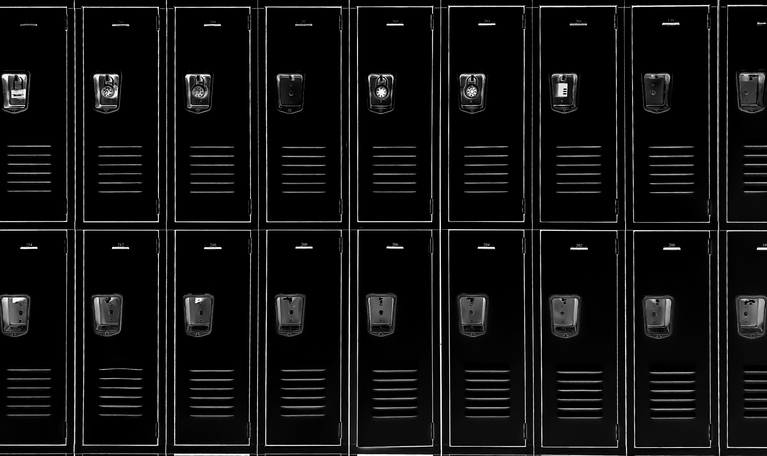School Safety Needs Real Investment Not More Police
OP-ED: School Safety Requires Deep Investment Not More Police

Source: Catherine McQueen / Getty
In the wake of one mass shooting after another, many people rightly wonder what can be done to ensure an end to the violence. As many applaud the Bipartisan Safer Communities Act, we offer caution and frustration that this legislation increases funding for police in schools, threat assessments and school hardening. However, research shows that students are more likely to come forward with information that could curb violence when they can trust school staff members – harmful surveillance technologies and the presence of police actually undermine students’ trust in school staff.
If there is one thing we want people to know, it is this: students and staff are safest when they are in learning environments that prioritize trust-building and wellness. Police in schools will never be a substitute.
In the last 20 years, over one billion dollars have been spent on school police. Yet, there’s been a long-standing failure to resource school counseling, culturally-affirming social-emotional learning, restorative and transformative justice programs, arts programs, and mental health supports. According to the U.S. Department of Education’s Civil Rights Data Collection, millions of students attend schools with police officers but no counselors, nurses, psychologists, or social workers.
Calls to increase the presence of law enforcement in and around schools as the solution to gun violence are misguided and reactionary. There is no substantial evidence that shows that police presence contributes to school safety. Rather, data show the opposite. A study of 179 school shootings between 1999 and 2019 found no evidence that School Resource Officer presence lessened the severity of school shooting incidents. Further, in cases of school shootings where school police officers were present, researchers found more casualties.
Additional police training has not made a difference. Police routinely abuse, arrest, intimidate, and harass Black and Brown students, students with disabilities, LGBTQ+ youth, and gender nonconforming youth. Since police in schools programs were first implemented in the 1950s, no published research has shown that increased training reduces the harm students and staff experience at the hands of school police.
Those of us who wish to ensure the wellness and safety of our nation’s public school students and staff must look beyond responses that offer only the illusion of safety and do nothing to create cultures of connectedness in schools – investments in restorative justice, culturally affirming curricula and social-emotional learning, diverse teaching and support staff, anti-bias training, mental and emotional health supports and more. As adults, we must do more to show, not just tell, students that they are valued, they belong, and they are cherished for their full humanity. Since investments in school policing programs have ballooned in recent years, there are now many students and staff who have never experienced a school building without the presence of police and policing infrastructure. This reinforces the myth that safety comes from the police. So, the question remains: Why keep investing in a strategy that has never worked?
Here are some strategies that do work.
Californians for Justice found that one in three students in California could not name a single caring adult at school. As a result, they developed the Relationship-Centered Schools model, a three-prong approach to relationship-building: 1) valuing student’s voice (e.g., collaboration between students, administrators, and teachers through youth-driven design teams to develop new practices) 2) investing in staff (e.g., providing staff professional development on SEL and unconscious bias); and 3) creating space for relationship-building (e.g., creating advisory structures where students stay with a caring adult all of their years of high school).
Through the passage of the George Floyd Resolution, Black Organizing Project won a ten-year campaign to remove police from the Oakland Unified School District. Through the implementation of the resolution, community members work directly with the school district to develop alternatives to policing. In just nine months, calls to police dropped by 90%.
Addressing the root causes of (gun) violence in school will require a comprehensive approach focused on the prevention and repair of social inequities. Violence must be addressed without contributing to the harassment, surveillance, and criminalization of Black and Brown students, in particular. We can’t only be responsive when harm rises to the level of mainstream awareness. We have to stretch to create the schools we all deserve – schools where wellness, trust, and holistic safety are at the foundation.
As our colleague, Marlyn Tillman, Federal Strategies Co-Chair for the Dignity in Schools Campaign and the co-founder and Executive Director of Gwinnett SToPP in Georgia said, “We’ve done it your way – metal detectors, bulletproof doors, more police, surveillance – and the killings keep happening. How many more babies must die? It’s past time to try our way with fidelity.”
Jaime T. Koppel is Co-Director at Communities for Just Schools Fund. Cierra Kaler-Jones, Ph.D. is the Director of Storytelling at Communities for Just Schools Fund. This national collaborative links philanthropy with the power of grassroots organizing to transform schools.
SEE ALSO:
OP-ED: Police-Free Schools Are Critical To Reproductive Freedom
OP-ED: School Safety Requires Deep Investment Not More Police was originally published on newsone.com















